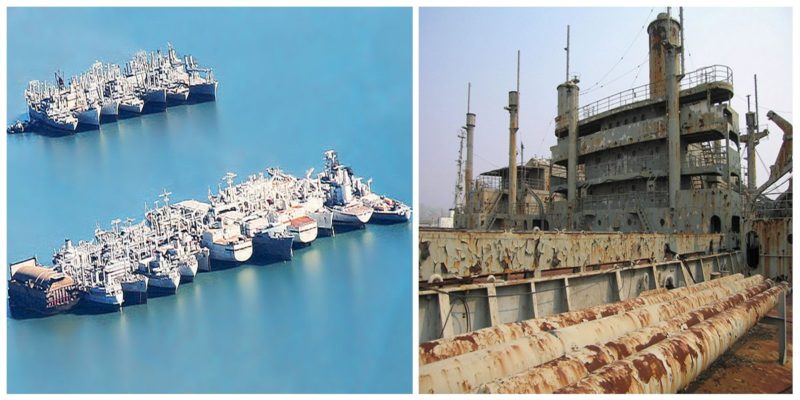This collection of U.S. Navy and merchant reserve vessels, known as the Suisun Bay Reserve Fleet (SBRF) and the Mothball Fleet, was created by the U.S. Maritime Administration following World War II to serve as a pool of potential backups for national defense.
It is located on the northwest side of Suisun Bay (the northern portion of the greater San Francisco Bay estuary). The fleet is within a regulated navigation area that is about 4 1/2 miles long and 1/2 mile wide.



Approximately 1,000 ships have called Suisun Bay home since 1946. At its peak in 1950, the program had more than 2,000 ships in lay-up.



Many of these ships were removed for sale as scrap metal during the 1990s, but over 80 ships still remained at anchor in the bay, including the WWII battleship USS Iowa (BB-61) which once served as the transport vessel for President Roosevelt, and fought in the Pacific during both WWII and the Korean War.
In March 2013, only 28 ships remained and by 2016, only 12 ships still call Suisun Bay home.





Throughout the years, these ships have caused a stir with environmentalists. The State of California and several environmental groups have raised concerns about the environmental impacts of the fleet.
Potential environmental concerns include heavy metals and antifouling agents in the paint that is peeling off of the vessels, as well as polychlorinated biphenyl (PCBs) and other hazardous materials that may have been released.



The fleet is under surveillance and trespassing is strictly prohibited. In January 2016, the Department of Transportation and MARAD have officially announced the fleet closure in February 2017. All remaining ships currently located at the site will be sold at auction or scrapped.
